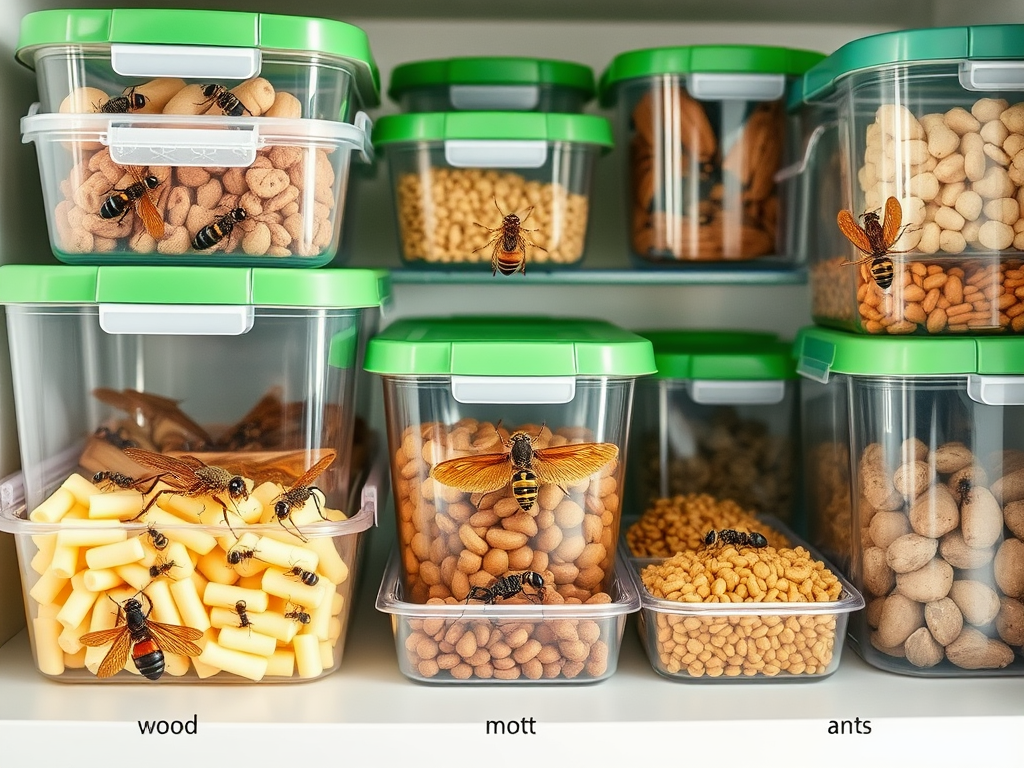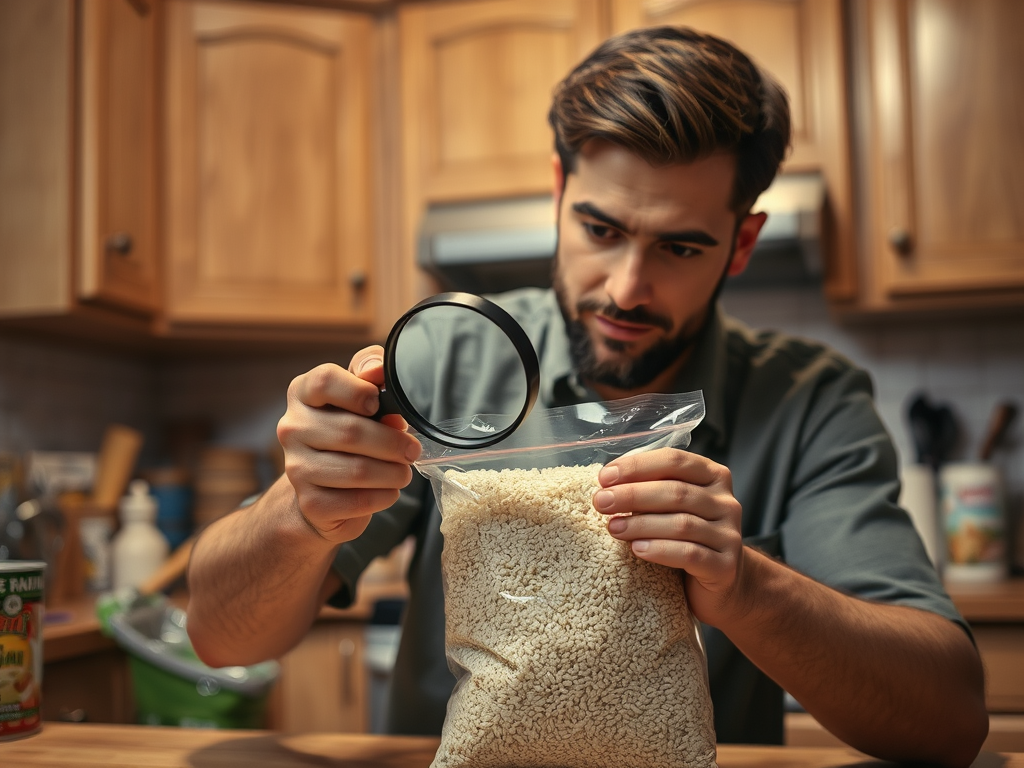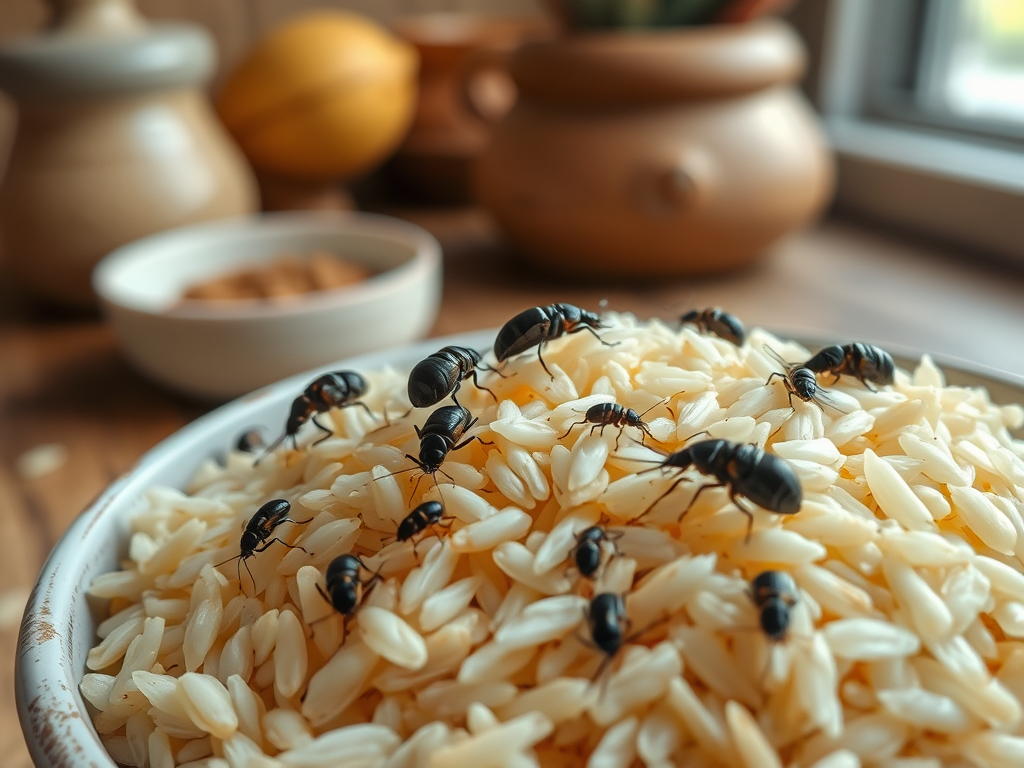The kitchen is often viewed as the heart of the home, a sanctuary filled with aromas of delightful meals and the joy of family gatherings. However, lurking in the corners of our pantries are uninvited guests that can wreak havoc on our food supply—bugs. Understanding the specific types of food bugs, particularly weevils found in rice, is essential for safeguarding our pantry and maintaining food quality. In this article, we will dive into the world of weevils, their characteristics, and how they compare to other common pantry pests. Armed with the right knowledge, you can effectively recognize these pests and implement preventive measures in your home. The fight against pantry pests is not only about protecting our food but ensuring our health and well-being. So, let’s explore these hidden adversaries and equip ourselves with tools to combat them!
What are Weevils?

Weevils are a unique group of beetles that fall under the family Curculionidae, known for their rodent-like snouts and captivating life cycles. To many, invasive weevils in rice may seem like minor nuisances, but their presence signifies deeper issues within your storage methods. These pests have adapted over centuries to thrive in stored grains, often leading to significant food waste. The most common weevils that afflict rice include the Rice Weevil and the Granary Weevil. Each of these species is adept at locating and infesting grains during storage, making them a primary concern for households and food businesses alike. Equipped with hard exoskeletons, these insects can survive various environments, complicating eradication efforts.
Identifying Weevils in Rice

To tackle an infestation effectively, you must first recognize the signs of weevils in rice. Identifying these pests presents unique challenges due to their resemblance to harmless bugs. Here are some key characteristics to spot weevils in your rice:
- Appearance: Dark brown or black with a distinct elongated snout.
- Size: They typically measure between 1/8 to 1/4 inch long.
- Signs of Infestation: Look for tiny holes in the rice grains and the presence of frass—resembling fine powder or tiny brown specks.
| Type of Bug | Appearance | Common Food Sources | Infestation Signs |
|---|---|---|---|
| Weevils | Dark brown or black, snouted | Rice, grains | Tiny holes, frass |
| Moths | Brown/gray wings with a distinct pattern | Dried fruit, nuts | Silken webs, larvae |
| Cockroaches | Flat, oval body, dark brown | Any food source | Droppings, egg casings |
Understanding the differences between weevils and other food bugs can help you act quickly when faced with an infestation. While the physical characteristics may vary, it’s essential to recognize that all of these pests thrive in similar conditions. Since they often coincide in pantry environments, knowing the specific signs of each can lead to more effective management strategies.
Other Types of Food Bugs
While weevils are notorious for invading rice and grains, other types of food bugs frequently find their way into kitchens. Among these, moths stand out as particularly troublesome, particularly the Indian Meal Moth. These pests exhibit a penchant for not only pantry goods but also dried fruits and nuts, making them a substantial threat to the variety of food we consume. Ants are also a common sight, typically attracted to sugary food sources, while cockroaches pose a broader risk due to their ability to infest virtually any food item.
- Moths: Indian Meal Moth and similar species prefer stored grains.
- Ants: Formicidae family includes species attracted to sugar.
- Cockroaches: Prolific invaders that thrive in a variety of food settings.
Preventing Infestations
Preventative measures can effectively keep weevils and other food bugs at bay. Proper storage techniques play a vital role in this battle. Consider the following recommendations to protect your food from these invasive pests:
- Use Airtight Containers: Store grains and dried foods in solid, sealed containers to block access.
- Regular Cleaning: Maintain a clean pantry and kitchen area to eliminate potential food remnants that can attract pests.
- Temperature Control: Consider storing food in cooler environments—insect activity often increases with warmth and moisture.
Conclusion
Identifying the differences between weevils and other food bugs is crucial for maintaining a pest-free kitchen. Knowledge is power when it comes to food safety, and being proactive about prevention techniques can save you time, money, and potential health concerns. By employing effective storage solutions, cleaning habits, and understanding pest behavior, you can assure a healthy environment for your family. Remember that your pantry should be a source of nourishment, not anxiety. With the right approaches, you can conquer the challenges posed by these pesky invaders and enjoy cooking without concern.
Frequently Asked Questions
- What attracts weevils to rice? Weevils are particularly drawn to the starch in dried grains, making rice an attractive target.
- Can weevils harm my health? While weevils themselves are not directly harmful, consuming infested food can lead to gastrointestinal distress.
- How can I tell if my rice is infested? Look for small holes in the grains, oily spots, or actual weevils lurking inside the packaging.
- What should I do if I find weevils in my rice? Dispose of the infested rice and thoroughly clean the storage area to remove any remaining pests.
- Are there natural remedies for getting rid of food bugs? Diatomaceous earth and essential oils like peppermint can deter kitchen insects when applied in storage areas.



